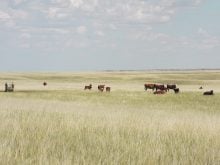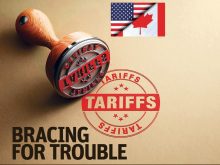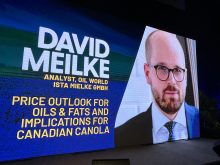The feasibility of building a beef packing plant in British Columbia continues to be discussed.
The plan is to find ways to process more beef in B.C. to supply local demand and offer premiums to beef producers.
“Building a packing plant is almost secondary to what we are trying to do. The packing plant is a tool. It is more about aligning the supply chain,” said Kevin Boon, manager of the B.C. Cattlemen’s Association.
Meetings have been held around the province to share a business plan for a 500 head per week plant that would offer a branded product and hopefully, financial premiums.
Read Also

Feds propose overhaul of chronic wasting disease control program
Chronic Wasting disease control program getting updated by Canadian Food Inspection Agency with feedback encouraged from producers.
“We know it will be a higher cost to process them and feed them here so we have to be able to find a way to achieve a premium at the other end,” he said.
A location has not been selected for a plant but the site needs to be a transportation hub with adequate labour as well as proximity to feed and cattle supplies.
The federally inspected plant would be run as a co-operative and if the idea goes ahead, different classes of shares would be offered to producers, investors and potentially processors.
The province is on side because it wants more local food processing.
“One of the things B.C. is very much lacking is the ability to supply our local market with B.C. product,” Boon said.
While there could be export or national sales potential, the idea is to start local.
“B.C. consumes more beef than we produce. We could fatten and finish and process all of our beef and still not have enough to feed demand of what our consumers have. Our best market is our close-to-home market,” he said.
While a business plan has been developed and a consulting firm was hired, the concept is not a sure thing.
“If we get to any point where it looks like it is not going to fly … then we will call a halt to it,” he said.
“We don’t want to sink $10 to $15 million into a plant and have it go belly up. The last thing we can afford is to have another plant failure,” he said.















